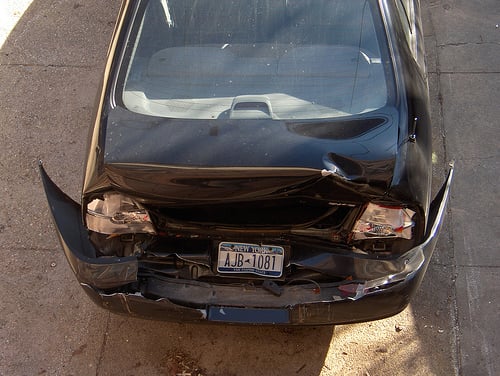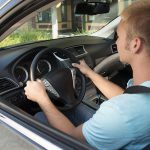Self-braking cars reduce rear-end accidents by 38%
Self-driving cars, long hailed for their safety benefits, are on the horizon consider the Cadillac, for one). But one new study claims that just a single driver-free feature could reduce accidents by a staggering 38%. Recent research from the European road safety research organization Euro NCAP concludes that self-braking cars (which automatically hit the brakes to avoid low-speed crashes) lead to a 38% reduction in rear-end crashes.

While rear-end collisions aren’t always fatal, they are frequent. Self-braking cars could reduce them by 38%. Image from Joe Shlabotnik.
As the organization explains, “Autonomous Emergency Braking (AEB) is one of the more promising safety technologies that is becoming increasingly common on modern passenger cars… The findings showed a 38% overall reduction in real-world, rear-end crashes for vehicles fitted with low speed AEB compared to a sample of equivalent vehicles with no AEB. There was no statistical difference found between urban (≤60km/h) and rural (>60km/h) speed zones.”
The researchers analyzed a number of AEB vehicles, and compared them to cars without AEB technology in scenarios when the cars were hit from behind or in front. AEB works, as Ars Technica explains, by “taking over braking duties in an emergency situation. Using radar, laser, or video technology, AEB monitors the area ahead of the car (usually around 6 to 8 meters, depending on the size of the vehicle) and automatically applies the brakes if it detects an obstacle in the way. Most AEB systems currently only work at speeds of up to 30 mph (50 kph), although some are being introduced that work at higher speeds.” AEB isn’t a new feature, but this study is one of only a handful to “put real data behind the safety claims.”
Dr. Michiel van Ratingen, Secretary General of Euro NCAP, shared: “These findings strongly support our decision to make AEB technology a key discriminator in the safety rating of new vehicles,” while Swedish Transport Administration group chairman Dr. Anders Lie, explained “The meta-analysis approach used in this analysis is a unique academic contribution to the evaluation of vehicle safety technologies internationally and proved to be reliable with robust findings. Clearly, at this level of effectiveness, low speed AEB is potentially an important active safety technology and widespread fitment through the vehicle fleet should be encouraged in the interest of improved vehicle safety.”
While the technology is compelling, self-braking cars may be more cost-saving than life-saving. Rear-end crashes are one of the most common types of auto accidents, but also one of the least fatal, accounting for about 23% of all motor vehicle crashes and resulting in approximately 2,000 deaths and 950,000 injuries, according to NHTSA data. But whiplash is a common result of rear-end crashes, and is “responsible for most of the two million insurance claims a year that involve minor neck injuries,” according to a 2006 New York Times article, which leads to higher insurance costs for even those not involved in accidents.
Related Posts
Category: Transportation

















